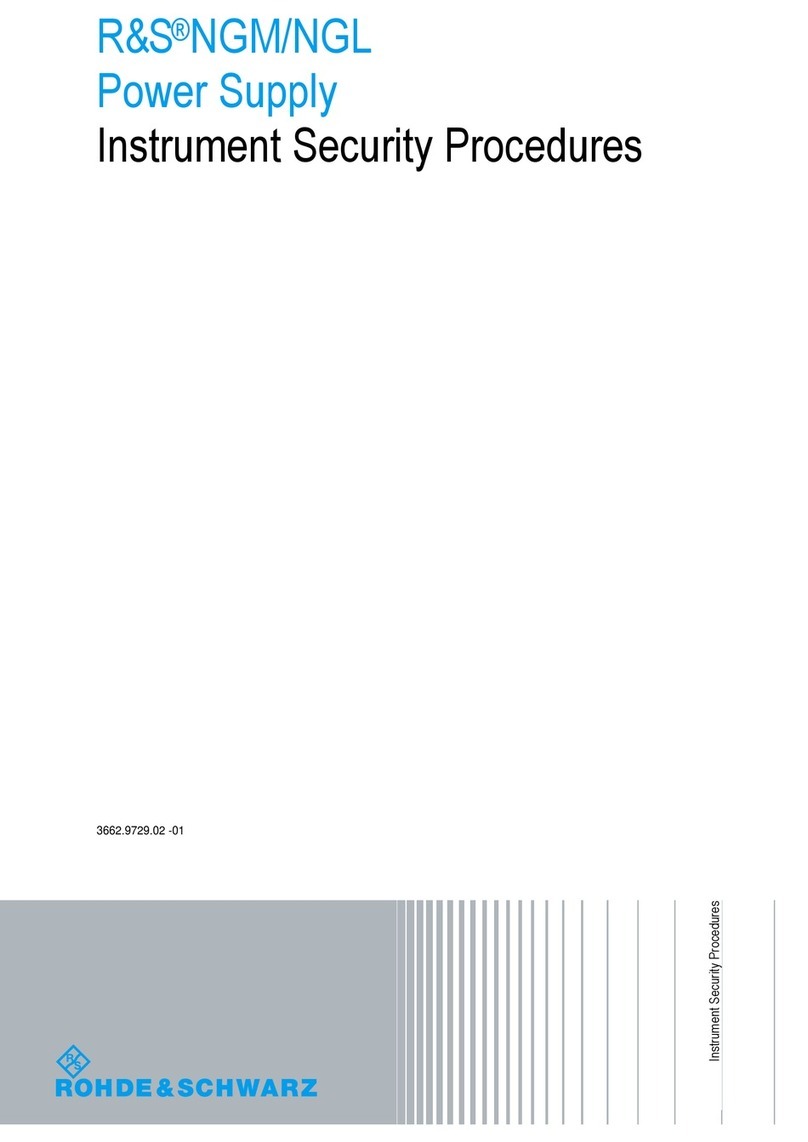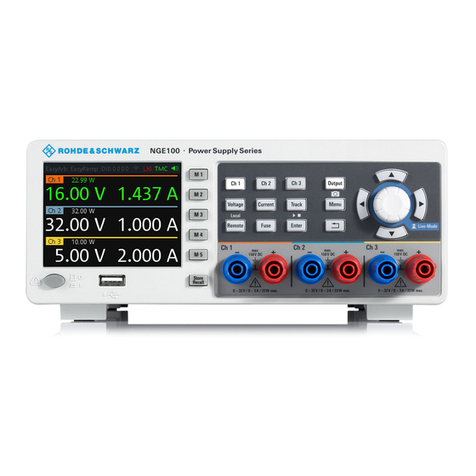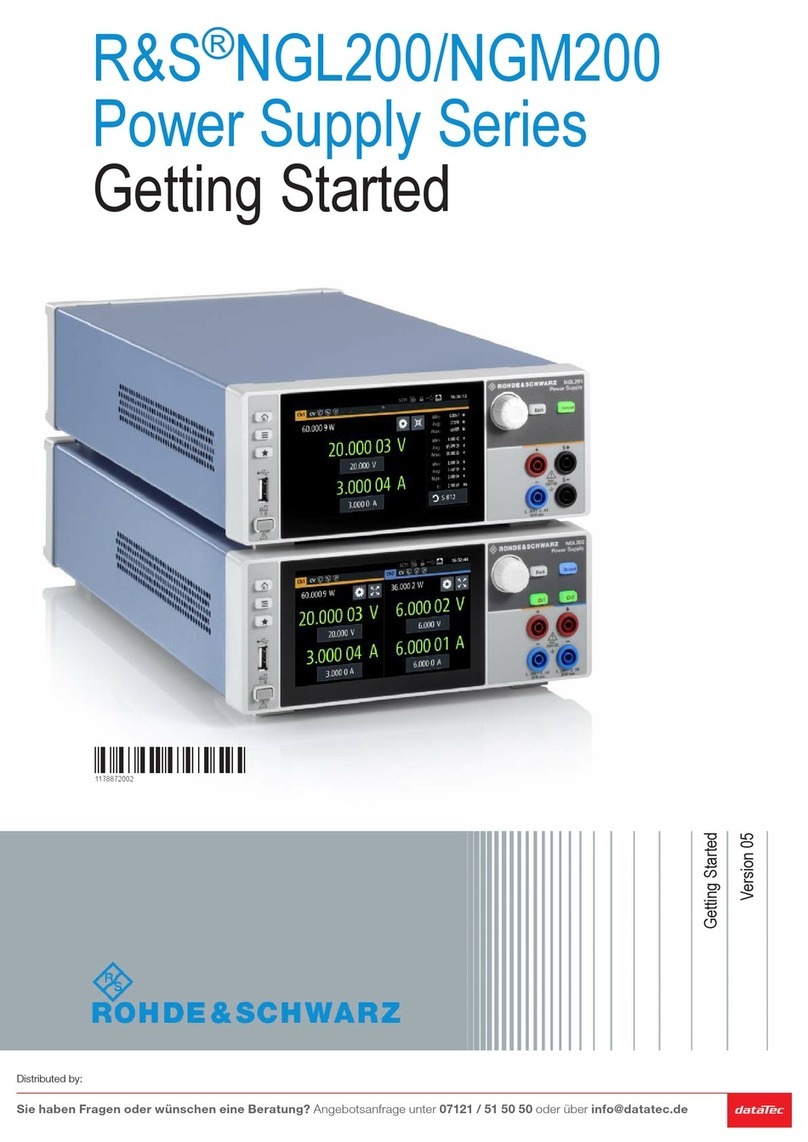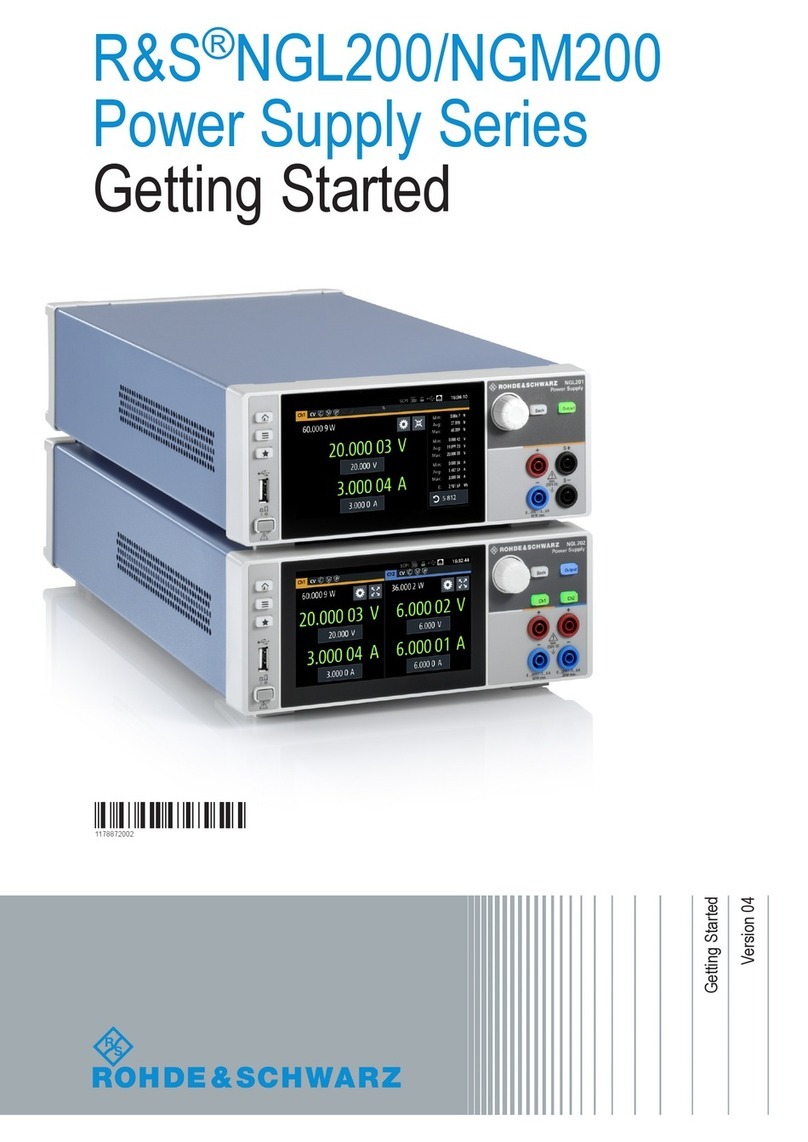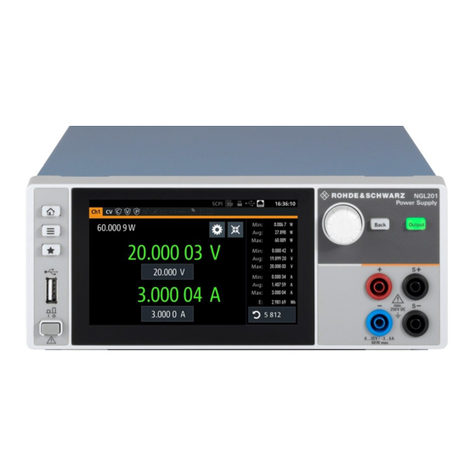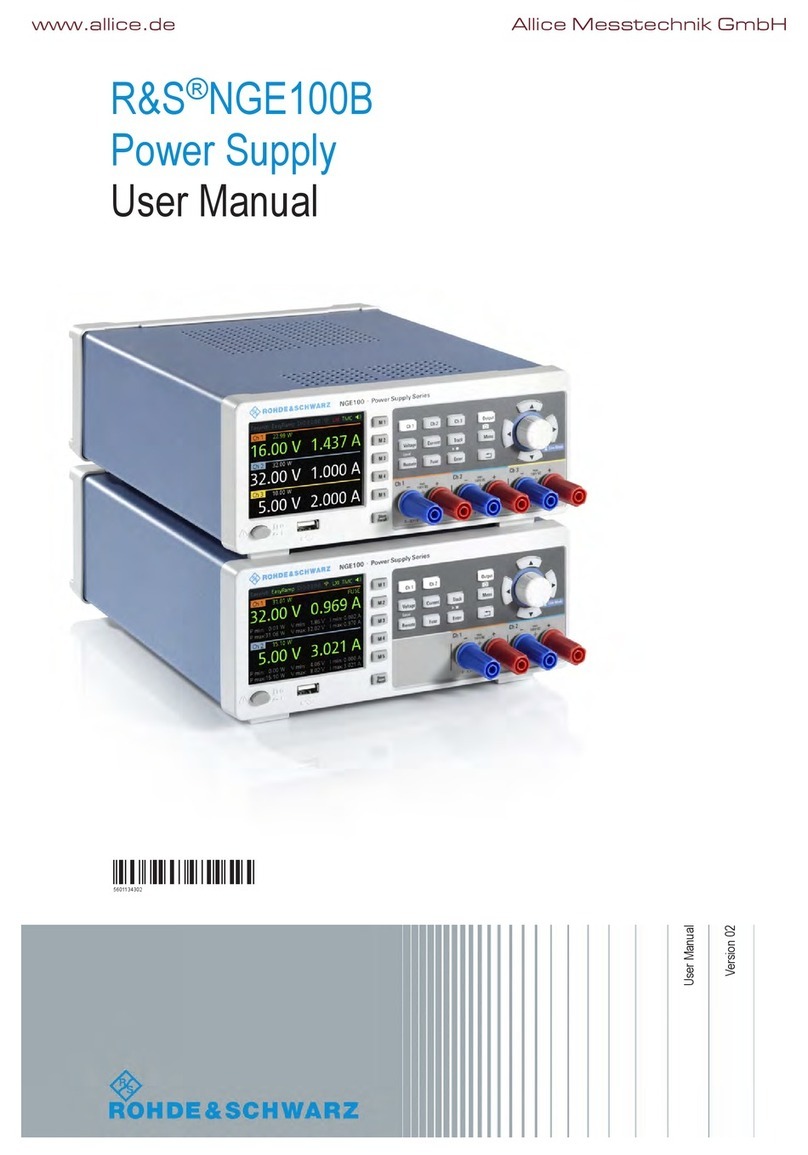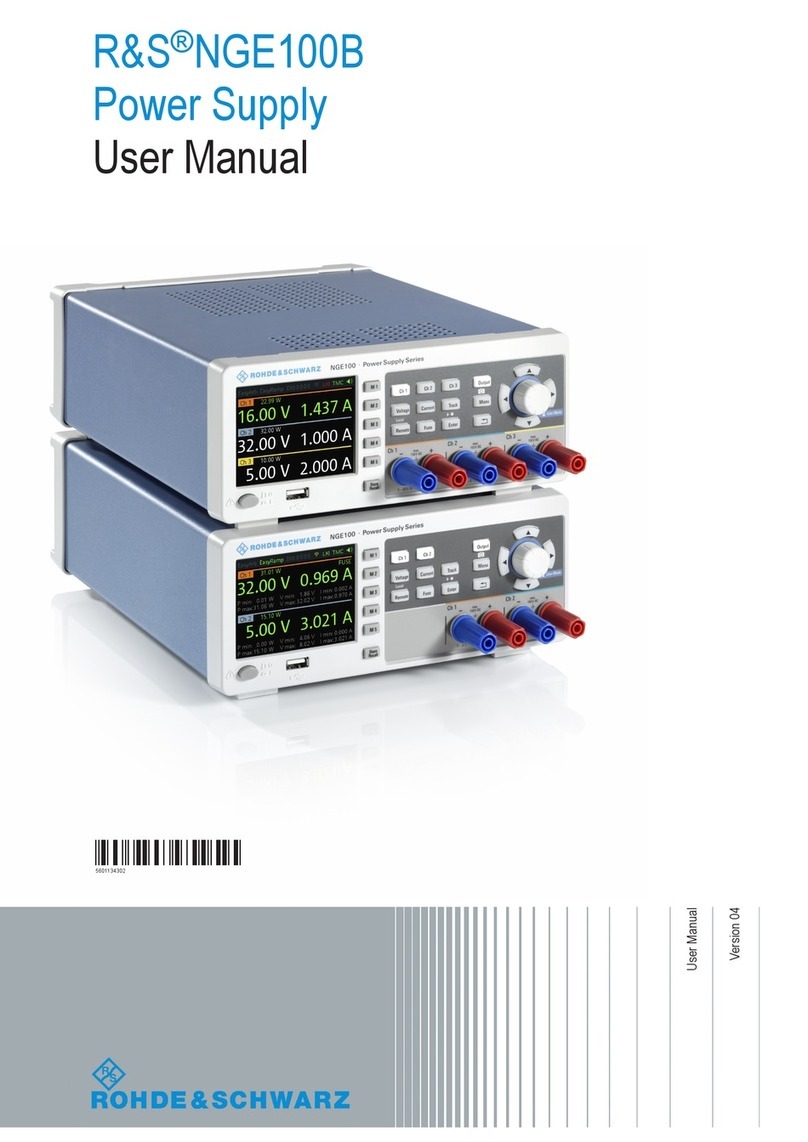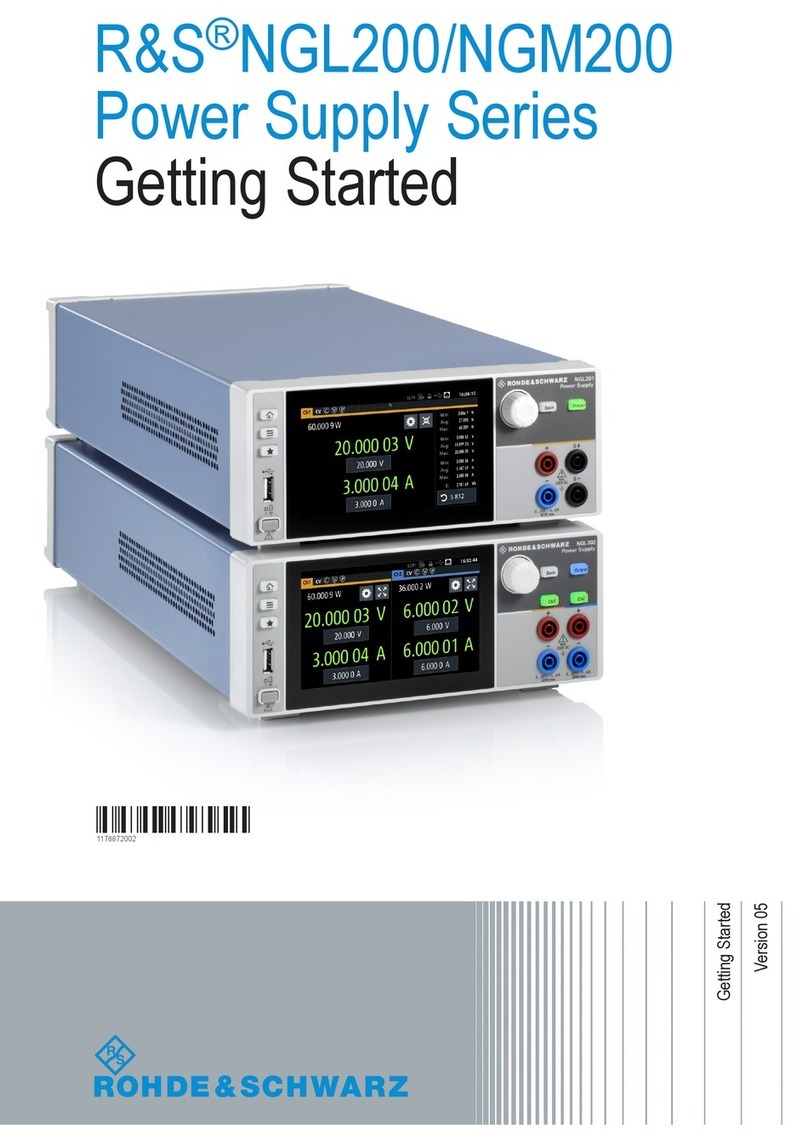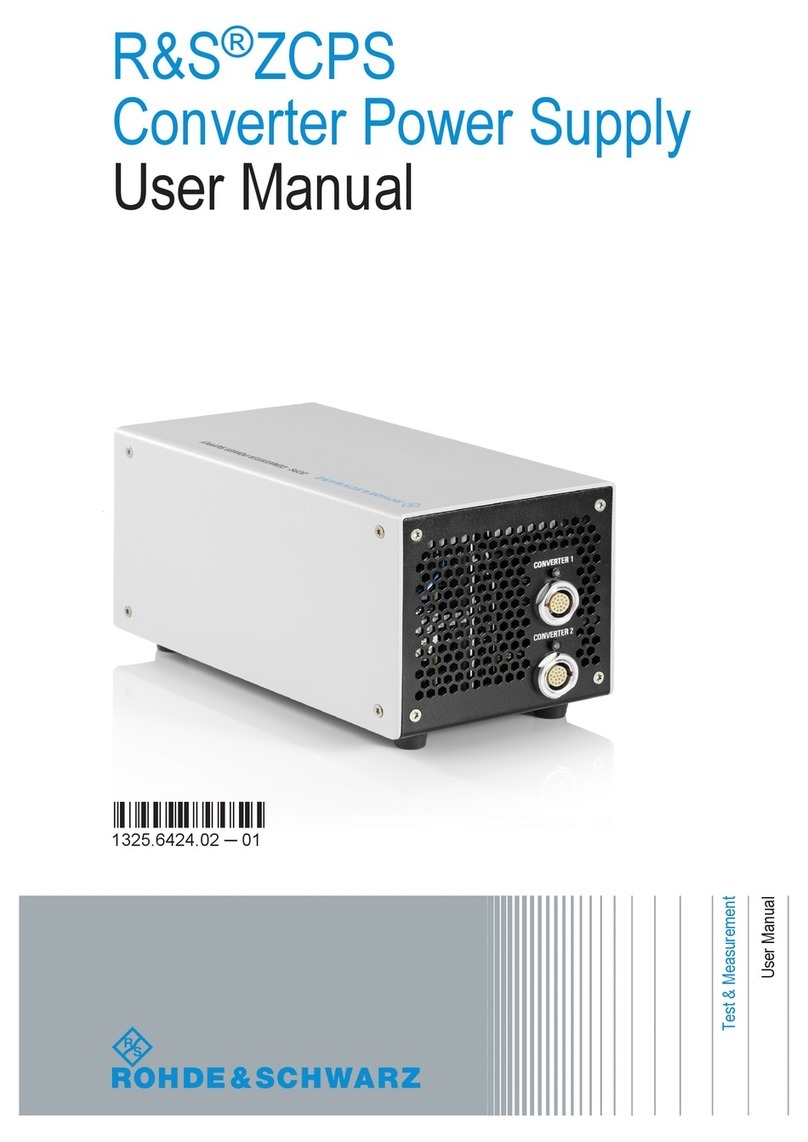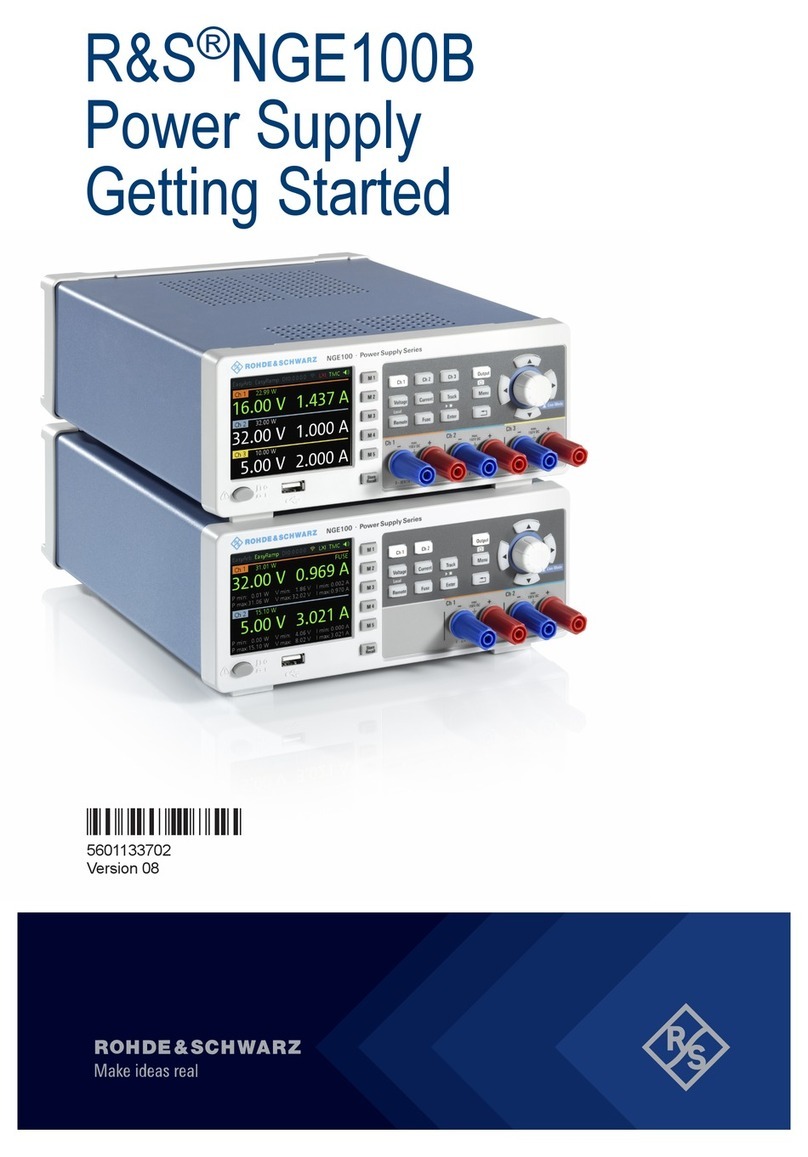
Welcome to R&S NGA100
R&S®NGA100
7Getting Started 5601.8902.02 ─ 06
2 Welcome to R&S NGA100
The one-channel or two-channel power supply series are based on a classical
transformer concept with high efficiency electronic pre-regulators and secondary
linear regulators. This concept allows the instrument to achieve the high output
power within a minimum space, high efficiency and lowest residual ripple.
The R&S NGA100 power supply series feature galvanically isolated, floating over-
load and short-circuit proof outputs with adjustable power ratings. The outputs
can be connected in series or in parallel, thus making high currents and voltages
available.
Multi-purpose protection functions are available for each channel which you can
set separately, such as overcurrent protection (FUSE), overvoltage protection
(OVP), overpower protection (OPP) and overtemperature protection (OTP). If
such a limit is reached, the affected output channel is automatically turned off and
an indicator message (FUSE, OVP, OPP or OTP) is displayed. The overcurrent
protection can be linked to other channel (FuseLink function). In this case, all
linked channels are turned off when the set channel reaches its limit.
The EasyArb function allows channel 1 (Ch 1) to have freely definable voltage
and current sequences with a timeframe as short as 10 ms. It allows you to vary
the voltage or current limit during a test sequence, for example to simulate differ-
ent charging conditions of a battery. With EasyRamp function, the R&S NGA100
provides the operating condition to simulate the continuous rise of the supply volt-
age within a defined timeframe of 10 ms to 10 s.
Four data lines of the digital I/O interface are mutually independent and can be
used as trigger input or trigger output separately. Various trigger conditions (e.g.
fuse tripped, voltage, current, indicator messages) can be used to turn off, on or
invert the output state when the trigger condition is met.
All R&S NGA100 power supply series are equipped with a color LCD display (320
x 240 pixels resolution). The R&S NGA100 comes with a USB interface, LAN and
optional wireless LAN (WLAN) interface.
For models with WLAN, network connection can also be established wirelessly.
This user manual contains a description of the functionalities that the instrument
provides. The latest version is available for download at the product homepage
(http://www.rohde-schwarz.com/product/nga100).

